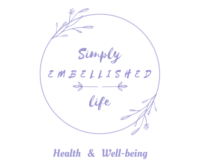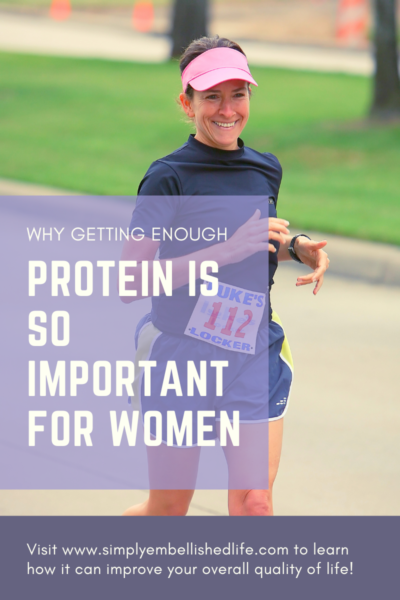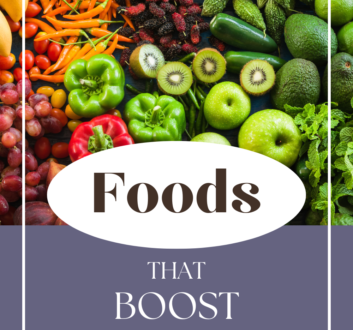Plenty of women are concerned about how much they eat and even how many calories they’re consuming in a day. It might seem logical to think of this as a good way to maintain a healthy weight, since calories in versus calories burned can play a role in fat storage. However, the best way to go about maintaining a healthy lifestyle is to consider what you’re eating, not just how much. One important nutrient to consume on a regular basis is protein. Do you know why protein is such an important part of a healthy diet? Did you know it has benefits beyond helping you achieve your goal weigh?
If you want to know what consuming enough can actually do for you and your overall health, keep reading.
Reasons Why Protein is Important For Women’s Health
- Building and repairing muscle tissue – Women need protein to maintain and build lean muscle mass. Muscles lose strength and mass as part of the natural aging process, so getting an adequate amount helps counteract this. Consuming it after exercise helps repair and rebuild muscle tissues that are broken down during physical activity. We don’t have to get weaker as we age, but we do have to put in some effort.
- Supporting bone health – Protein plays a role in promoting bone formation and reducing bone loss. This can help prevent conditions like osteoporosis. This can prevent more serious injuries as we get older.
- Regulating hormones – Many hormones in women’s bodies are made from amino acids, which are the building blocks of protein. Getting a sufficient amount can help balance hormones. I think we all know how unbalanced hormones can cause all kinds of problems, mental and physical.
- Boosting metabolism – Eating adequate protein may give your metabolism a slight boost since it takes more energy to digest protein than fats or carbs. This can aid in weight maintenance. Calories consumed is not the only factor in what we eat. Plus, protein helps you feel satisfied longer so you won’t be looking for you next meal or snack after you just ate. Besides that, we need protein to build muscle and the more muscle we have the higher our metabolism.
- Promoting healthy aging – Higher protein intake is linked to improved physical functioning. If you feel better you’re more likely to be able to do more and live a more fulfilling life. Again just because we get older doesn’t mean we have to feel old, weak, and unable to do the things we love.
How Much is Enough?
The current recommended daily intake of protein for women is 0.8 grams per about 2 pounds of body weight. For example, if you weigh 150 lbs, the calculation would look like this :

If you’re trying to gain muscles (not just maintain), you’ll need to increase that amount. Pregnant and breastfeeding women may also need slightly more.
Clearly, getting enough high-quality protein is vital for women’s overall health.
What Are the Best Sources of Protein?
Here are 6 foods that are among the highest in protein derived from animals:
- Chicken breast – One 3 oz cooked chicken breast contains around 28 grams of protein.
- Lean beef – A 3 oz serving of lean cuts like sirloin provides about 25 grams of protein.
- Salmon – A 3 oz portion of cooked salmon has approximately 22 grams of protein.
- Eggs – One large egg contains about 6 grams of protein.
- Greek yogurt – Plain nonfat Greek yogurt typically provides around 20 grams of protein per 6 oz serving.
- Cottage cheese – A 1/2 cup serving of cottage cheese packs approximately 14 grams of protein.
Some other protein-rich foods include milk, cheese, pork, shrimp, and tuna. When choosing high-protein foods, go for lean options.
Here are 5 of the top plant-based options:
- Soybeans – 1 cup of boiled soybeans contains around 29 grams of protein. Soybeans are also a complete protein containing all essential amino acids.
- Lentils – 1 cup of boiled lentils has approximately 18 grams of protein. Lentils are an excellent source of protein for vegetarians and vegans.
- Chickpeas – 1 cup of cooked chickpeas provides about 14.5 grams of protein. Chickpeas are a versatile ingredient and can be used to make plant-based meat alternatives, salad topping, or just roasted and eaten as a snack.
- Hemp seeds – A 3 tablespoon serving of hemp seeds has over 10 grams of protein. Hemp seeds offer a substantial amount of protein in a small serving.
- Tofu – Half a cup of firm tofu contains about 10 grams of protein. Tofu is made from soybeans and absorbs flavors easily, making it a staple in many vegetarian dishes.
Other good plant-based protein sources include edamame (less mature soybeans), spirulina, quinoa, nutritional yeast, nuts like almonds and peanuts, seitan, and whole grains like amaranth and teff. A balanced diet incorporating a variety of these high protein plant foods can meet protein needs for vegetarians and vegans. Or, just provide a wider variety to choose from so you don’t feel like you’re eating the same thing all the time.
How to Actually Get Enough Protein
As you can see, there are lot of choices when it comes to choosing foods that are high in protein. It’s a great idea to mix it up and get some different types of protein rich foods, so you can get a wider variety of amino acids. It’s also a good idea to plan for some protein at each meal. It not only helps you get enough within the day, it also keeps you feeling fuller longer, so you’ll be less likely to snack on less nutritious foods.
Meal planning is pretty much essential if you want to make sure you’re getting enough of the right nutrients, like protein. Pick a few different sources of protein each week and plan your meals around them. It’s easy to find recipes that incorporate protein if you just google it or search Pinterest (one of my favorite places to find recipes). Just type in, healthy (protein of your choice) recipe. You’ll be given more recipes than you could ever make, so just pick a few that look good.
Don’t worry about getting an exact amount of protein, or it will become overwhelming and frustrating. Keep it simple. Just estimate and get as close as possible to the number you calculated from the formula above. Not making it too difficult means you’re much more likely to succeed.
All the health benefits are definitely worth the effort, so just keep trying to get as close as you can on most days.
Want to get more tips and info about simple ways to live the healthy life you deserve, don’t forget to subscribe!
If you want a little more support and guidance, feel free to book a free consult. Just click below!






